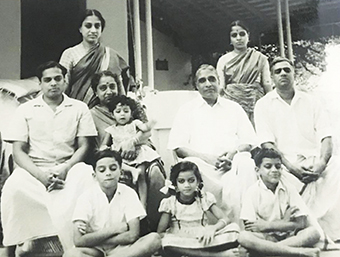Forts were very important those days. The strength of a kingdom was based on its defense mechanism. Mythology and history are full of forts. Kumbalgarh fort is endowed with the second longest wall in the world.
The forts of Chitorgarh, Jodhpur, Amber, Delhi, Agra, Gwalior, Jhansi and the mighty forts of the Marathas are legendary. Shivaji’s general Tanaji lost his life while capturing the Sinhagad fort in the year 1670 AD. The Chandragiri and Golkonda forts are famous even today.
Kingdoms were made and lost because of the forts held or captured. A set of people were good in the construction of forts and were quick to close the breaches at the time of war. Coimbatore became an important place during the reign of Vijayanagar. It was under the Naicks of Madurai for a few centuries.
The fort was the headquarters for a number of Palayams. The Polygars or the Palayakkarars used to assemble their armies in the fort area at times of war. The Vijayanagar administration had chosen Coimbatore as a garrison and hence the fort was built by them. No wonder, the three services are still in the city because of the beginning made so long ago.
The Coimbatore fort had been a flash point during the Anglo Mysore Wars that took place between 1767 and 1799. Wars around the fort caused much bloodshed. Quite a few political prisoners were placed inside the fort. A number of executions were carried out within its walls. The Kottai Sangameswaraswamy and Kottai Perumal Temples at Ukkadam used to be located within the fort. Goddess Koniamman was the guardian deity. The fort had an administrative leader and the tax collector stayed near by in Oppanakkara Street.
A 400 page document was made on the fort by the British. The fort changed hands a number of times during the Anglo Mysore Wars and Tipu Sultan of Mysore demolished it in the year 1793. Today, the place which housed the fort is known as Kottaimedu.
The British army used to arrive on the eastern side of the fort. Several Naick rulers, their polygars, Hyder Ali, Tipu Sultan and European soldiers had visited the fort. The fort had a large number of educated people and was endowed with two Agraharam streets. Priests who serve at the Koniamman, Dhandumariamman and Kottai Sangameswaran temples live in these agraharams.
It must have quite a sight to see the life in the Coimbatore fort. The temples had been closed during the times of war and the priests had left the place. They came back a few years later in order to serve the temples and the devotees.
The Kongu country and the Coimbatore District (undivided) in particular was blessed with several forts and many were built with mud. About 25 mud forts had once existed in the undivided Coimbatore District.
These forts were located in Kaveripuram, Sampalli, Andiyur, Bhavani, Vijayamangalam, Perundurai, Velladi, Ponnapuram, Singanallur, Anniyur, Orachimalai, Udumalpet, Kottaipalayam, Garudankottai, Masanaickenpalayam, Kaniyur, Kozhumam, Attilithurai, Kajjahatti, Satyamangalam, Talaimalai, Kanisiddankootai etc.,
Sankagiri was also a famous fort. A huge number of fort construction experts had lived those days.
‘Kaval’ constructions were in existence in front of the big forts. These facilities were created in order to warn the authorities about the arrival of foes.
It is said that the ‘Nadukaval’ in the vicinity of Coimbatore was one such place. The fort walls in Bhavani had stood well at the time of floods in the rivers – Cauvery and Bhavani. The place that had been selected for the fort with rivers on two sides, the width of the walls speak volumes about the foresight of the rulers and their generals.
The first invasion of the Fort in Coimbatore during the times of Hyder Ali. In 1782 Fullerton captured the Coimbatore fort but he was later defeated by Tipu Sultan. Peace prevailed by the year 1784 and Coimbatore continued under the sway of Tipu. A lot of havoc took place under his rule.
The wars drove people away from this region. Coimbatore was renamed as ‘Salamabad’ and Podanur became ‘Husanabad’ during his rule. The names were changed on the orders of Tipu Sultan. It was in the year 1790 that the third battle of the Coimbatore fort took place. Peace was restored again and Tipu destroyed the fort after killing those who failed in his hour of crisis.
Coimbatore thus had a ‘Pettai’ and ‘Kottai’. The ‘Pettai’ area extended between Sukrawarpet and Ukkadam. Hyder Ali and Tipu Sultan considered Coimbatore to be strategic to their interests. A few rebellious polygars and generals were executed in the Coimbatore fort. The Ukkadam Lakshmi Narasimha Temple stood at the entrance of the ‘Kottai’ and ‘Pettai’. Each and every ruler, general and pontiff used to visit this ancient temple before entering Coimbatore.
The fort was a mustering point for 30 palayams and the garrison, cannons and visits of soldiers must have been an interesting sight. No wonder the British did a big study of the fort in Coimbatore.
It is sad that the fort no longer exists. A number of illustrators had made sketches of the forts in India but we are yet to find one connected with the fort at Coimbatore.
Forts served their purposes by protecting the people, but today they are serving the country as tourist spots which provide employment and exchanges.
—Rajesh Govindarajulu
‘Pettai’ And ‘Kottai’ That Existed In Composite Coimbatore District




